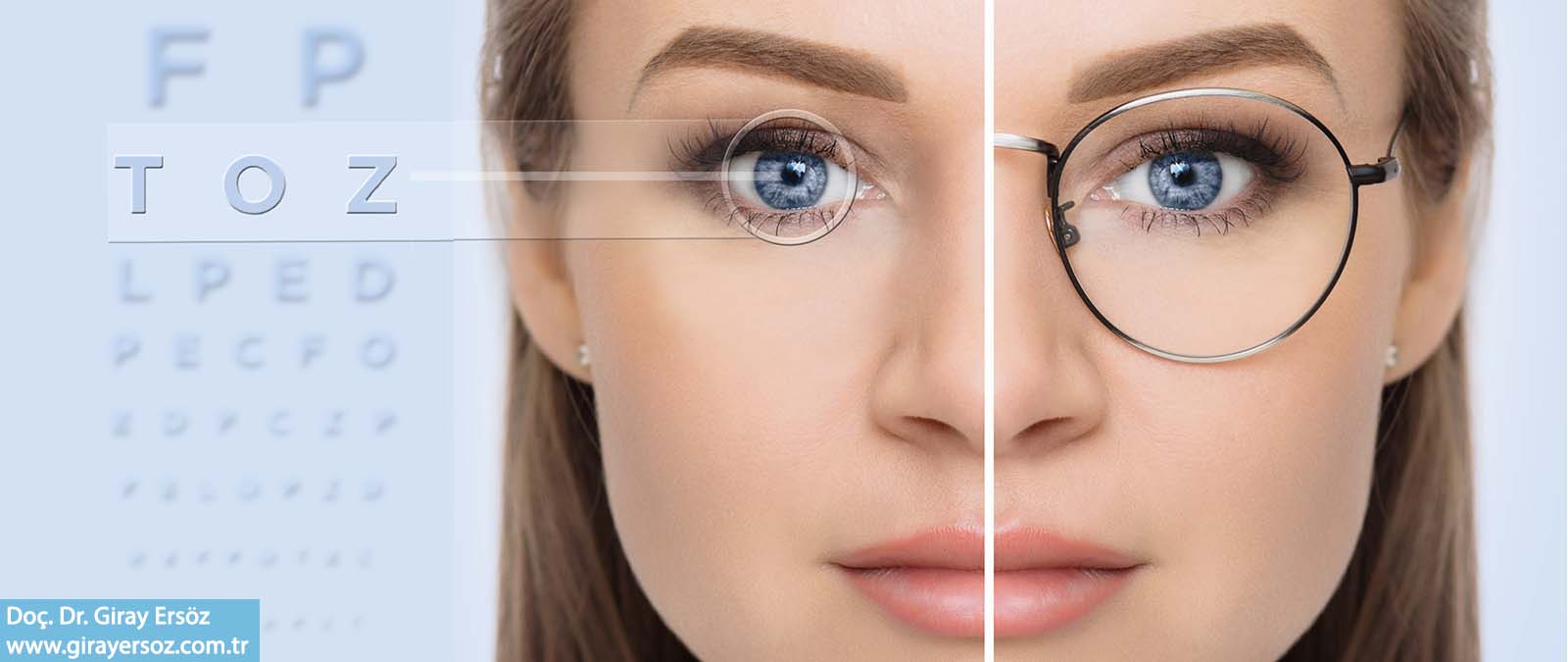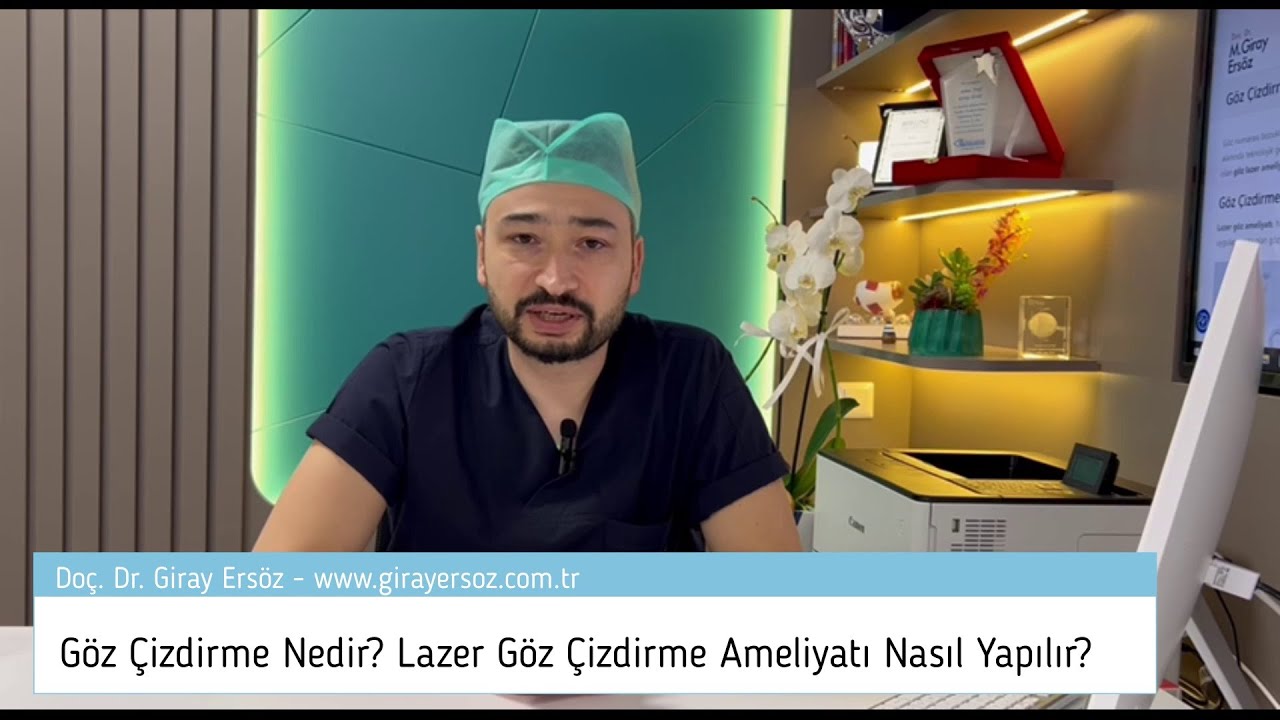Wearing glasses was once the only option for correcting vision problems. Over time, contact lenses offered an alternative, reducing the dependence on glasses. Today, thanks to advancements in medical technology, laser eye surgery—a permanent solution to many vision issues—has become a widely used method. This procedure is commonly referred to as “Laser to Remove Glasses“.
In the video below, I explain what laser to remove glasses is, the different techniques used, and how to determine which method is most suitable for each case. After the video, you’ll also find answers to the most frequently asked questions and important topics related to laser to remove glasses.
What is Laser to Remove Glasses (Laser Eye Surgery)?
Laser eye surgery, commonly known as “Laser to Remove Glasses” among the public, refers to laser treatments used to correct vision problems such as myopia, hyperopia, and astigmatism.

Which Eye Conditions Can It Be Used For?
Laser to Remove Glasses procedures are primarily performed on individuals who wear glasses due to myopia (nearsightedness), hyperopia (farsightedness), or astigmatism.
While there are some laser techniques available for presbyopia—the age-related difficulty in seeing up close that typically begins after the age of 40—smart lens (intraocular lens) surgeries are generally the preferred option for these cases.
Who Can Have Laser Eye Surgery (Laser to Remove Glasses)?
Laser eye surgery, also known as Laser to Remove Glasses, can generally be performed for vision problems up to 12 degrees of myopia, 6 degrees of hyperopia, and 6 degrees of astigmatism.
To correct each degree of vision impairment, a small portion of the corneal tissue must be reshaped using a laser. This means that both the degree of the vision problem and the thickness of the cornea are critical factors in determining eligibility for the procedure.
For example, if the cornea is sufficiently thick, laser treatment may be possible even for 12 degrees of myopia. However, if the cornea is too thin, the procedure might not be suitable even for someone with only 3 degrees of myopia.
Additionally, the shape of the cornea matters—if the cornea is too steep or irregular, laser eye surgery may not be recommended.
What Are the Methods of Laser Eye Surgery (Laser to Remove Glasses)?
Laser eye surgery—commonly referred to as Laser to Remove Glasses—involves various techniques developed using different types of laser technology. Depending on the method used, one or more types of laser devices may be involved. Each technique is tailored to the patient’s eye structure and visual needs.
Types of Laser Devices Used in Laser to Remove Glasses
Excimer Laser: This is not a specific surgical method, but a type of laser device used in several procedures, including PRK, No-Touch, and I-LASIK. It reshapes the corneal surface to correct vision.
Femtosecond Laser: A different type of laser used to create precise incisions or flaps in the corneal tissue. It is commonly used in I-LASIK and SMILE procedures.
Laser to Remove Glasses (Laser Eye Surgery) Methods
1. PRK (Photorefractive Keratectomy)
In this method, the outermost layer of the cornea (epithelial tissue) is manually removed or loosened using alcohol. Then, an excimer laser is used to reshape the cornea by thinning specific areas, correcting the refractive error.
Healing: Expect discomfort or pain for about 3 days while the epithelium regenerates.
2. No-Touch Laser (TransPRK)
This is a more modern version of PRK. The epithelial layer is removed using an excimer laser, without any manual scraping or alcohol. The cornea is then reshaped just like in PRK.
Healing: Similar to PRK, there is mild to moderate discomfort for around 3 days until the tissue heals.
(For more details, see my article: “What is No-Touch Laser? Application and Aftermath of No-Touch Laser”)
3. I-LASIK (IntraLase LASIK)
This method uses two different laser devices. First, a femtosecond laser creates a thin flap in the cornea. The flap is then gently lifted, and an excimer laser reshapes the underlying tissue to correct the vision. The flap is placed back afterward.
Healing: Minimal discomfort, with a typically quick recovery process.
4. SMILE (Small Incision Lenticule Extraction)
This advanced method uses only a femtosecond laser. A small lens-shaped piece of tissue is created and removed from the inner layers of the cornea through a tiny incision—without the need for a flap.
Healing: Very little pain and faster recovery compared to other methods.
Advantages: Minimally invasive, suitable for patients with dry eyes or thin corneas.
What to Consider Before Laser Eye Surgery (Laser to Remove Glasses)?
Before undergoing a Laser to Remove Glasses suitability assessment, it’s important to stop wearing contact lenses for at least 48 hours. Ideally, you should avoid contact lenses for 5 to 7 days prior to the procedure, as they can temporarily alter the shape of the cornea and affect the accuracy of the evaluation.
Additionally, your eyes must be free of any active infections, inflammation, or allergic reactions on the day of surgery. Ensuring your eyes are healthy and stable helps reduce risks and improves the success of the procedure.
How Is Laser Eye Surgery (Laser to Remove Glasses) Performed?
Laser eye surgery, also known as Laser to Remove Glasses, is performed under local anesthesia using numbing eye drops. It is a non-invasive, outpatient procedure, meaning there’s no need for an overnight hospital stay.
Each surgical method has slightly different steps, as outlined earlier.
The PRK and No-Touch techniques are the shortest, typically taking around 5 minutes per eye.
The I-LASIK method, which involves multiple stages using both femtosecond and excimer lasers, is the longest, usually lasting between 10 to 15 minutes per eye.
Despite the variation in duration, all procedures are generally quick, safe, and painless during surgery, with minimal recovery time afterward.
What Are the Risks of Laser Eye Surgery (Eye Drawing)?
While laser eye surgery (eye drawing) is considered very safe compared to other types of eye surgeries, like any medical procedure, it carries some risks. The likelihood of complications is low, but the risk level may vary depending on the method used.
Some of the most important potential risks include:
- Thinning of the cornea beyond safe limits
- Steepening or irregular shaping of the cornea (ectasia)
- Reduced corneal transparency, which may affect vision clarity
- Residual refractive error, meaning some degree of eyeglass prescription may remain after surgery
- Proper pre-surgery evaluation and choosing the right technique significantly reduce these risks.
What Are the Risks of Laser Eye Surgery (Laser to Remove Glasses)?
While laser eye surgery (Laser to Remove Glasses) is considered very safe compared to other types of eye surgeries, like any medical procedure, it carries some risks. The likelihood of complications is low, but the risk level may vary depending on the method used.
Some of the most important potential risks include:
- Thinning of the cornea beyond safe limits
- Steepening or irregular shaping of the cornea (ectasia)
- Reduced corneal transparency, which may affect vision clarity
- Residual refractive error, meaning some degree of eyeglass prescription may remain after surgery
- Proper pre-surgery evaluation and choosing the right technique significantly reduce these risks.
Are There Any Side Effects of Laser Eye Surgery (Eye Drawing)?
Yes, like any medical procedure, laser eye surgery (eye drawing) can have side effects. All laser techniques involve thinning the cornea, which is a necessary part of reshaping it to correct vision. Additionally, temporary dryness of the eyes is a common side effect after surgery. This dryness typically improves over time with proper use of prescribed eye drops and care.
Are There Any Side Effects of Laser Eye Surgery (Laser to Remove Glasses)?
Yes, like any medical procedure, laser eye surgery (Laser to Remove Glasses) can have side effects. All laser techniques involve thinning the cornea, which is a necessary part of reshaping it to correct vision. Additionally, temporary dryness of the eyes is a common side effect after surgery. This dryness typically improves over time with proper use of prescribed eye drops and care.
Laser Eye Surgery (Laser to Remove Glasses) Cost
The cost of laser eye surgery can vary depending on the technique used and the type of laser device involved. Advanced methods such as SMILE or I-LASIK tend to be more expensive due to the technology and precision required. Your doctor will determine the most suitable method based on your eye structure and prescription, which will also affect the overall cost.
Recovery Process
- I-LASIK: Offers the fastest recovery. Most patients experience clear vision the very next day, with little to no pain.
- SMILE: Also painless, but the visual clarity improves more gradually, typically over a few days.
- No-Touch and PRK: These methods have the slowest recovery. Patients often experience discomfort or pain for the first 3 days. Initial visual improvement usually begins after the third or fourth day. Full visual clarity may take 3 to 4 weeks.
Possible Post-Surgery Effects
Pain and Blurred Vision: These are common aftereffects, especially with No-Touch and PRK, and vary in intensity and duration based on the method.
Subconjunctival Hemorrhage (blood spots in the white of the eye): This can occur after I-LASIK or SMILE procedures. While it may look concerning, it is harmless and typically resolves on its own within 7–10 days.
Possible Post-Surgery Effects
Pain and Blurred Vision: These are common aftereffects, especially with No-Touch and PRK, and vary in intensity and duration based on the method.
Subconjunctival Hemorrhage (blood spots in the white of the eye): This can occur after I-LASIK or SMILE procedures. While it may look concerning, it is harmless and typically resolves on its own within 7–10 days.
Frequently Asked Questions (FAQ)
Yes, some Training and Research Hospitals (EAH) and university hospitals offer laser eye surgery for a fee. However, this procedure is not available in standard state hospitals.
No, SGK does not cover the cost of laser eye surgery in either state or private hospitals. It is considered an elective procedure.
Most private insurance providers classify laser eye surgery as a cosmetic or non-essential procedure, so it is typically not covered under standard policies.
Yes. If it is determined that a candidate has undergone laser eye surgery, their application will be rejected by the National Defense University.
Yes, individuals who have undergone laser eye surgery can join the police force, provided they do not have any other vision-related issues that disqualify them.
No. The procedure is performed under local anesthesia using numbing eye drops, so there is no pain during the surgery. However, mild sensations of pressure or touch may still be felt.
It is not recommended to undergo laser eye surgery during pregnancy, as hormonal changes can affect vision and may alter results after the procedure.
Patients with controlled eye pressure (glaucoma) may still be eligible for laser eye surgery if they meet all other medical requirements. A thorough evaluation by an ophthalmologist is essential.









